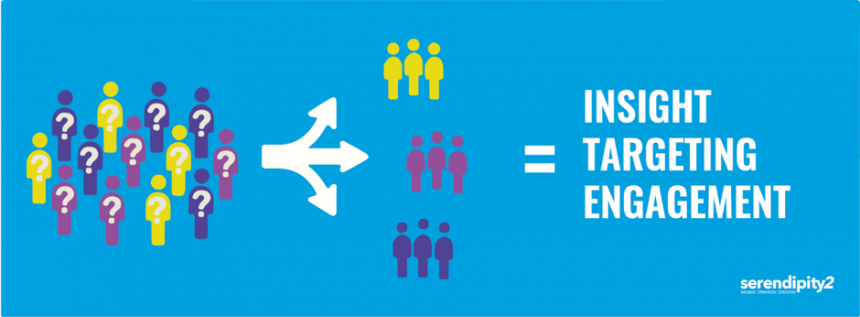Customer segmentation is the practice of dividing customers into groups of individuals that have shared characteristics or traits. These characteristics may be age, gender, life stage, or traits such as interests and spending habits.
The aim of segmentation is to group similar customers who have perceived common needs, interests and priorities. If you understand these segments you can then effectively communicate to them by identifying the right offers, prices, promotions and distribution suitable for each segment or group.
Segmentation is crucial in today’s marketplace as customers are becoming more savvy about how they interact with companies but also who they would like to purchase from. We have moved on from the mass marketing and personalisation to a new age where customers, both B2B and B2C, expect companies to understand who they are, their specific needs and behaviour and which channels they prefer.
The theory behind customer profiling and segmentation is not new, but now we have more data available to us from a variety or channels and more sophisticated tools at our disposal. This enables us to provide more thorough and in-depth analysis providing robust customer profiles and segments.
Benefits of Customer Segmentation
Define Audiences – Segmentation allows us to understand your customers and identify those that are the most profitable, valuable or offer the greatest future opportunity.
Personalisation – The ability to group your customers and tailor communications and promotions based on their inherent needs and preferences provides a personalised service which customers expect or prefer.
Improved ROI – Understanding your customers enables you to target promotions and communications more effectively by channel and message. Targeted marketing offers cost savings by targeting customers that are more likely to respond but also improves response rates and therefore return on investment.
Customer Satisfaction – Tailoring product offerings and communication provide a more personalised relationship that improved customer engagement and satisfaction. We all know it costs 10 times more to attract new customers so retaining existing customers is extremely important.
Prospecting – Once you have identified the profile of your best customers (by loyalty or profit) you can target look-alikes who represent your best opportunity prospects and future customers.
Identify Growth Opportunities
Customer segmentation enables you to identify the most profitable segments and those that provide the largest opportunity. Once you know which groups provide the most profit you can treat them differently to ensure you retain this profitability. Groups which represent a great opportunity but aren’t being maximised can be targeted as a new growth area with resources allocated to reach this potential. Once you understand your customer segments and the value to the business you can identify specific strategies for each such as nurture, maintain and defend.
Process of segmenting your customers
Dependent on the type of your business and key drivers that affect sales performance, you can choose to segment your customers based on many key variables, such as geography, demographics and attitudinal profiles or by internal data such as transactional value, revenue, profitability or product/service purchased.
Segmentation does not have to be complex, though you can segment your customers based on just one variable as simple as the product type they have purchased or an accumulation of shared characteristics that cross over socio-demographic and internal data.
The complexity or granularity of the segmentation process should be based on your business needs but incorporating both socio-demographic and internal data provides the most valuable and effective bespoke segmentation.
Consumer segmentation models
Basic segmentation models are based on one of the following. More complex segmentation models are developed using a combination of the below factors, weighted based on their importance to the organisation.
Geography – by region, area or country
Product/Service – product/service purchased
Behavioural – usage of product of service, frequency, loyalty, occasions
Demographic – age, gender, life stage, education, income, race
Value – transactional value or potential revenue they bring to company
Customer segmentation provides actionable Insight
Once you have your customer base segmented you are in the position to use this insight to drive intelligent strategic decisions on your sales, marketing and operations. The more you know about your customers the more sophisticated you can be with your marketing decisions. Once you have a segmented database you are in a position to use these groups to implement highly targeted and personalised campaigns that can be prioritised in terms of spend, frequency and internal resource based on an informed strategy.
If you would like to learn about how your data could be segmented to drive future growth please contact us now on 01926 887555 or email [email protected]

